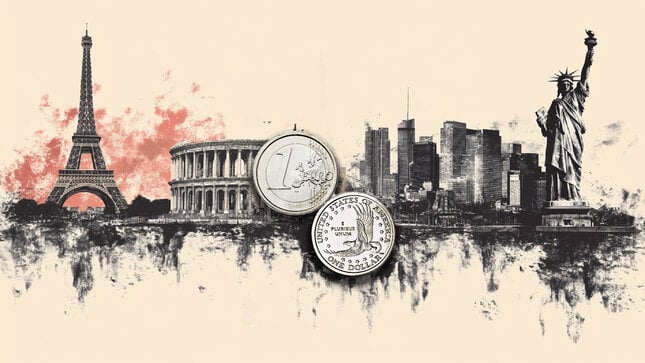USD/INR Parite
Editörün Seçimi

EUR/USD Haftalık Fiyat Analizi: ABD istihdam ve enflasyon verileri piyasa hissiyatını şekillendirecek
EUR/USD paritesi, aralık ayının ikinci haftasında 1,1762 ile yeni bir aylık zirve seviyesine yükseldi ve bu seviyenin birkaç pip altında kapanış yaptı.

Bitcoin Haftalık Fiyat Analizi: BTC, ETF çıkışları arasında temel desteği koruyor
Bitcoin (BTC) son kayıpların ardından konsolide olmaya devam ediyor ve cuma günü 87.000$ civarında seyrediyor. Zayıflayan spot Borsa Yatırım Fonları (ETF'ler) talebi piyasayı baskı altında tutmaya devam ederken, Strategy bu hafta 10.000 BTC daha ekledi.
USD/INR
The USD/INR pair tells the trader how many Indian Rupees (the quote currency) are needed to purchase one U.S. dollar (the base currency). The Rupee is symbolized by ₹ and is the 20th most traded currency worldwide.
HISTORIC HIGHS AND LOWS FOR USD/INR
- All-time records: Max: 69.528 on 28/08/2013 - Min: 1.30 in 1948
- Last 5 years: 74.42 on 11/10/2018 - Min: 61.81 on 28/03/2015
* Data as of February 2020
ASSETS THAT INFLUENCE USD/INR THE MOST
- Currencies: USD, CNY and GBP.
- Commodities: Gold, oil and silver (India is a major oil and commodity importer).
- Bonds: T-NOTE 10Y (10 year United States Treasury note) and GIND10YR (India Government Bond Generic Bid Yield 10 Year).
- Indices: S&P BSE SENSEX (S&P Bombay Stock Exchange Sensitive Index), NIFTY (National Stock Exchange of India's benchmark stock market index for Indian equity market) and NSE (National Stock Exchange of India Ltd).
ORGANIZATIONS, PEOPLE AND ECONOMIC DATA THAT INFLUENCE USD/INR
In India, the organizations and people that affect the most the moves of the USD/INR pair are:
- Reserve Bank of India which controls the issue and supply of the Indian rupee. RBI is the regulator of entire Banking in India. It plays an important part in the Development Strategy of the Government of India, issues statements and decides on the interest rates of the country. Its Governor is Shaktikanta Das.
- Government of India, often abbreviated as GoI, (whose President is Ram Nath Kovind) and its Ministry of Finance (whose minister is Nirmala Sitharaman) that implement policies that affect the economy of the country.
In the USA, we have:
- Fed, the Federal Reserve of the United States of America whose president is Jerome Powell. The Fed controls the monetary policy, through active duties such as managing interest rates, setting the reserve requirement, and acting as a lender of last resort to the banking sector during times of bank insolvency or financial crisis.
- The US Government (and its President Donald Trump): events as administration statements, new laws and regulations or fiscal policy can increase or decrease the value of the US Dollar and the currencies traded against it, in this case the Bank of India.
In terms of economic data, we should highlight the Trade Account Balance, a balance between exports and imports of total goods and services. A positive value shows a trade surplus, while a negative value shows a trade deficit. It is an event that generates some volatility for the USD/INR. If a steady demand in exchange for INR exports is seen, that would turn into a positive growth in the trade balance, and that should be positive for the INR.
Inflation is another economic value that is important for the USD/INR pair. It is measured among others by the CPI (Core Price Index) and the PPI (Production Price Index). They are key indicators to measure inflation and changes in purchasing trends.